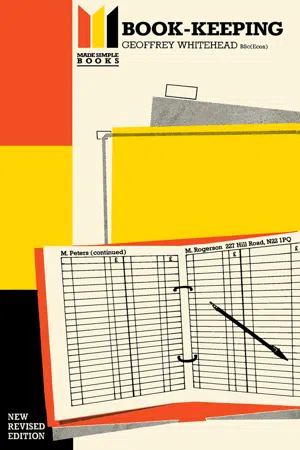About this book
Book-Keeping Made Simple, Revised Edition covers all the basic principles of elementary book-keeping. The book describes the requirements and process of starting a business, including ledger accounts, classifying the assets, the balance sheet, buying assets, and transactions involving liabilities. The text also discusses the double-entry systems; subsidiary books and original documents; the reduction of work-on day book entries; and the three-column cash books. The journal proper, the Imprest system, the trial balance and its limitations, and the bank reconciliation statements are also considered.The book further tackles analytical or columnar day books; the principle and layout of the cash book; the adjustments in final accounts; and partnership accounts. The text also discusses departmental-, manufacturing-, and control accounts and accounts of limited companies; the amalgamation of businesses; the purchase of a business; and the bills for exchange.Students of book-keeping will find the book invaluable.
Frequently asked questions
- Essential is ideal for learners and professionals who enjoy exploring a wide range of subjects. Access the Essential Library with 800,000+ trusted titles and best-sellers across business, personal growth, and the humanities. Includes unlimited reading time and Standard Read Aloud voice.
- Complete: Perfect for advanced learners and researchers needing full, unrestricted access. Unlock 1.4M+ books across hundreds of subjects, including academic and specialized titles. The Complete Plan also includes advanced features like Premium Read Aloud and Research Assistant.
Please note we cannot support devices running on iOS 13 and Android 7 or earlier. Learn more about using the app.
Information
Table of contents
- Front Cover
- Book-Keeping: Made Simple
- Copyright Page
- Table of Contents
- Foreword
- Chapter 1. Starting a business – a capital idea
- Chapter 2. The Ledger – the main book of account
- Chapter 3. How Double Entry Book-keeping works
- Chapter 4. Subsidiary books and original documents
- Chapter 5. Reducing the workon Day Book entries
- Chapter 6. The Three-column Cash Book
- Chapter 7. The Journal Proper
- Chapter 8. The Columnar Petty Cash Book – Imprest System
- Chapter 9. Book-keeping to the Trial Balance
- Chapter 10. Limitations of the Trial Balance: Suspense Accounts and the correction of errors
- Chapter 11. Bank Reconciliation Statements
- Chapter 12. Analytical or Columnar Day Books
- Chapter 13. The Bank Cash Book
- Chapter 14. More about depreciation
- Chapter 15. The Wages Book and wages systems
- Chapter 16. Book-keeping to 'Final Accounts' – part one: the Trial Balance
- Chapter 17. Book-keeping to 'Final Accounts' – part two: the Trading Account
- Chapter 18. Book-keeping to 'Final Accounts' – part three: the Profit and Loss Account
- Chapter 19. Book-keeping to 'Final Accounts' – part four: the Balance Sheet
- Chapter 20. Capital and revenue expenditure and receipts
- Chapter 21. The valuation of stock
- Chapter 22. Adjustments in Final Accounts
- Chapter 23. Partnership Accounts
- Chapter 24. The accounts of clubs and non-profit-making organizations
- Chapter 25. The increased net-worth method of finding profits: single entry or incomplete records
- Chapter 26. Departmental Accounts
- Chapter 27. Manufacturing Accounts
- Chapter 28. The accounts of limited companies
- Chapter 29. The interpretation of Final Accounts: statistical control figures
- Chapter 30. Control Accounts
- Chapter 31. The amalgamation of businesses
- Chapter 32. The purchase of a business
- Chapter 33. Accounting for Bills of Exchange
- Chapter 34. The concepts and principles of accounting
- Answer section
- Index
